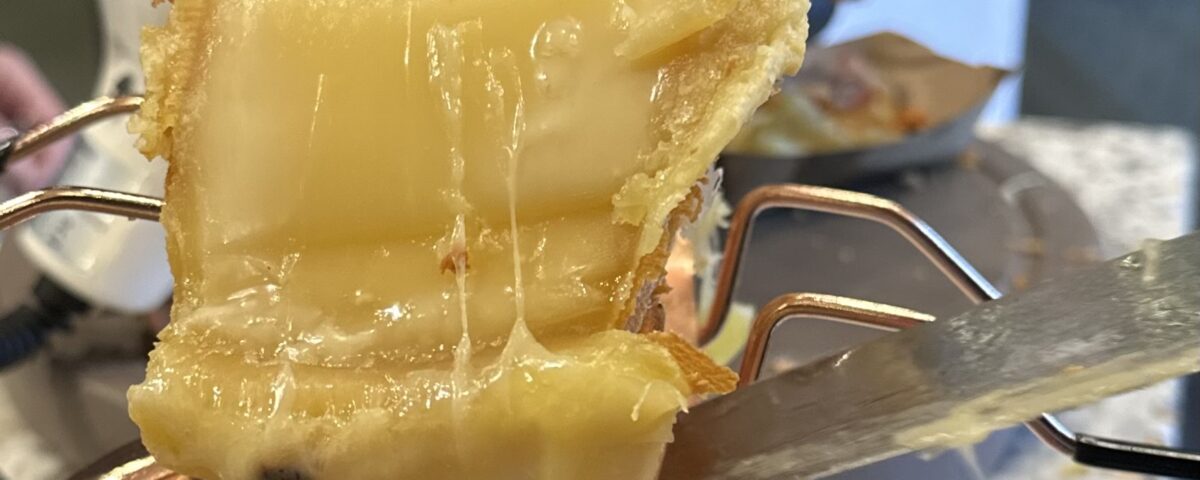
Halloween Candy + Cheese: The Magic of Food Pairings
October 27, 2023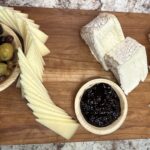
How to Build a Cheese & Charcuterie Board
March 18, 2024by Katie Glaudell
The holidays are over, the cheery twinkling lights are coming down, yet the darkness and dismal weather remain. How do we get through the rest of winter with our sanity intact? This year, I’m taking survival tips from “après-ski” culture. But what is après-ski? A time of day? A cuisine? A state of mind? Yes, yes, and yes.
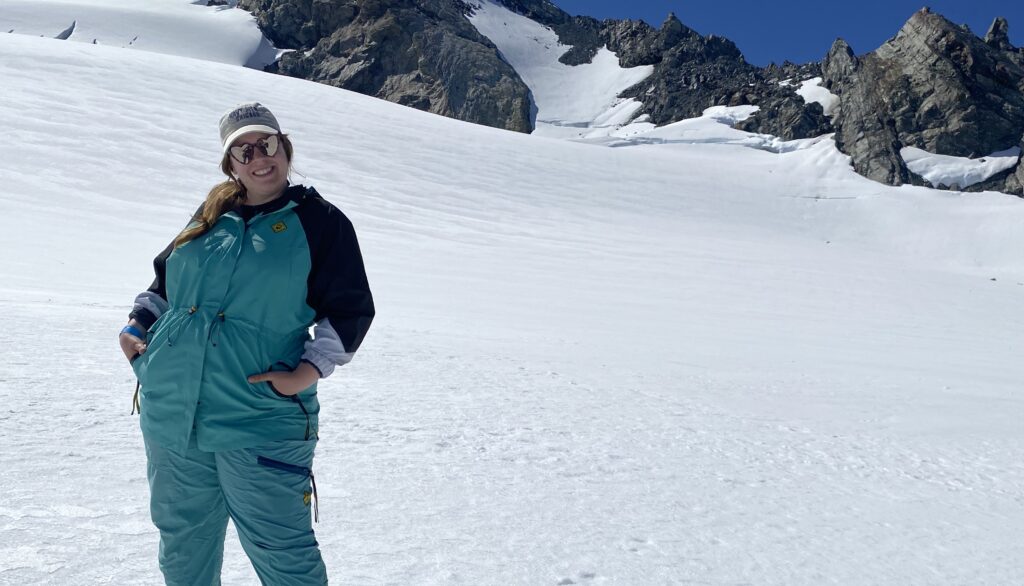
Originating from the tea-time-obsessed British elite who started frequenting Swiss ski resorts in the 1800’s, the term meaning “after-ski” now encompasses the foods, cocktails, and fashions of ski resort culture across the world. Details differ from country to country, but the theme repeats: concluding a long day of winter sports, folks come back to resort bars and restaurants to warm up with drinks, replace burnt calories with hearty foods, and enjoy good company.
This is the model I intend to adopt this winter. Even though there are no mountains to fly down in Illinois, the defiant optimism of ski resort culture is something to be admired. Instead of lamenting winter’s inevitabilities, people choose to celebrate and conquer the harshest season of the year. And after the conquering is done for the day, they eat really well. Like so many daring resort patrons, I am determined to venture outside and appreciate the icy beauty of the season. Then, I will cook my way through the long dark evenings with classic après-ski recipes. Join me and we can combat the winter blues together! It all starts with cheese.
Alpine Cheese: the Après-Ski Allstar
Many of the foods you’d see on a ski resort menu in Europe involve melted cheese–specifically, Alpine cheese. Gruyère, Raclette, Comté, Fontina, and Emmenthaler all fall under this category, but what makes this cheese “Alpine,” and what makes it so good for melting?
The Alps refers to the mountain range covering parts of France, Italy, Switzerland, and Austria, as well as Slovenia, Liechtenstein, and Monaco. But “Alpine cheese” doesn’t refer to just any cheese coming from these regions. The term specifically refers to the giant wheels (some averaging 70 to 80 pounds) famous for their elastic and meltable texture, which is achieved by a particular cheesemaking process that slows down acidification. The process also requires less salt, a rare commodity in the mountains centuries ago when this cheese got it start.
Long before skiing became a high-end recreation on the mighty European slopes, townspeople came together to share these giant wheels of cheese in order to make it through the Alpine winters, melting wedges over the fire and dolloping onto post-harvest staples like potatoes, cured meats, and pickles. This tradition has led us through the generations to some of the best things you’d see on a European après-ski menu today.
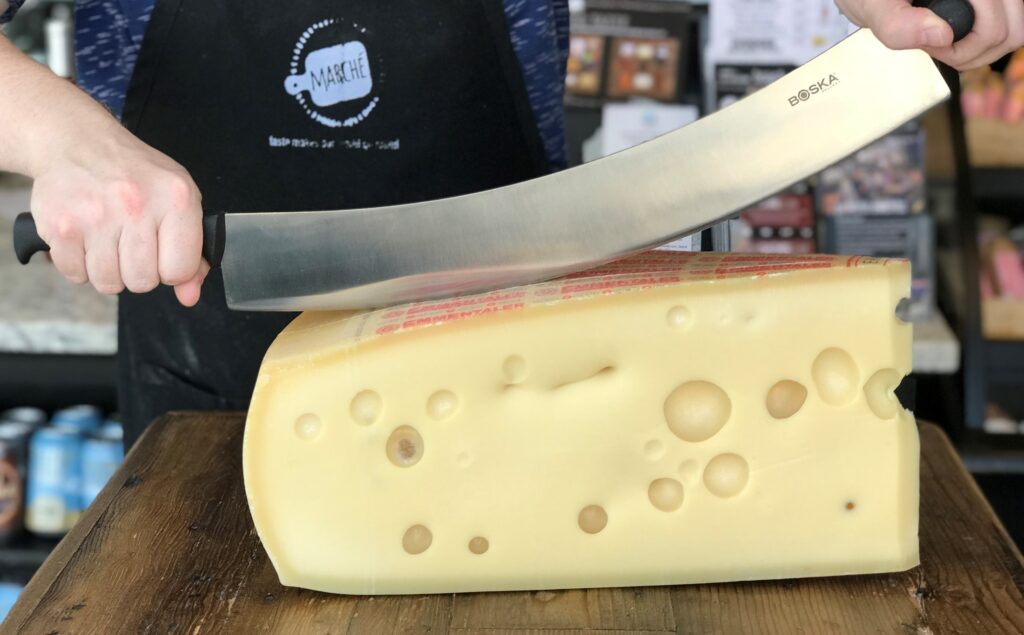
Cheesy Après-Ski Dishes to Warm Your Frozen Post-Holiday Heart
Raclette: Scraped Cheese
All you need is a wedge of Raclette, a heat source, and some vehicles for cheese: bread, potatoes, pickles, and cured meats are traditional. There are melting machines requiring a 3-to-4-pound wedge of Raclette, which you scrape as it melts, directly onto your favorite foods. If you don’t have a Raclette melter, no sweat! Just add chunks of cheese onto bread or cooked potatoes, pop in the oven until the cheese starts to bubble, then garnish with cornichons and chow down.
Fondue: Melted Cheese
Fondue simply means “melted” in French. If you like tweaking and perfecting recipes to get your ideal results, this can be a fun rabbit hole to go down! As with Raclette, there is specialized equipment for making fondue, but it’s not an absolute requirement. Double boiler pots, cast iron pots, and crockpots can be substituted. Below are a few classic fondues:
- Fondue Savoyarde (Rhône Alps, France): Made with one or a combination of cheeses like Gruyère, Beaufort, Abondance, and Emmenthaler, with white wine, kirsch, garlic, and nutmeg added.
- Moitié-Moitié (Fribourg, Switzerland): Meaning half-and-half, this recipe calls for equal parts Gruyère and Vacherin Fribourgeois, with black pepper or cayenne pepper instead of nutmeg.
- Comté Fondue (Jura, France): This traditional recipe is just Comté, Côtes de Jura white wine, garlic, and nutmeg.
- Fonduta (Valle d’Aosta, Italy): Fontina is the melter of choice for this version from northwestern Italy, with cream instead of white wine, eggs, and black truffle to garnish.
No matter which recipe you try, the key is slow and gentle heating so the cheese doesn’t split. Also, be sure to grate your cheese for a faster smoother melt, and use slightly stale bread for dipping, as it holds up better.
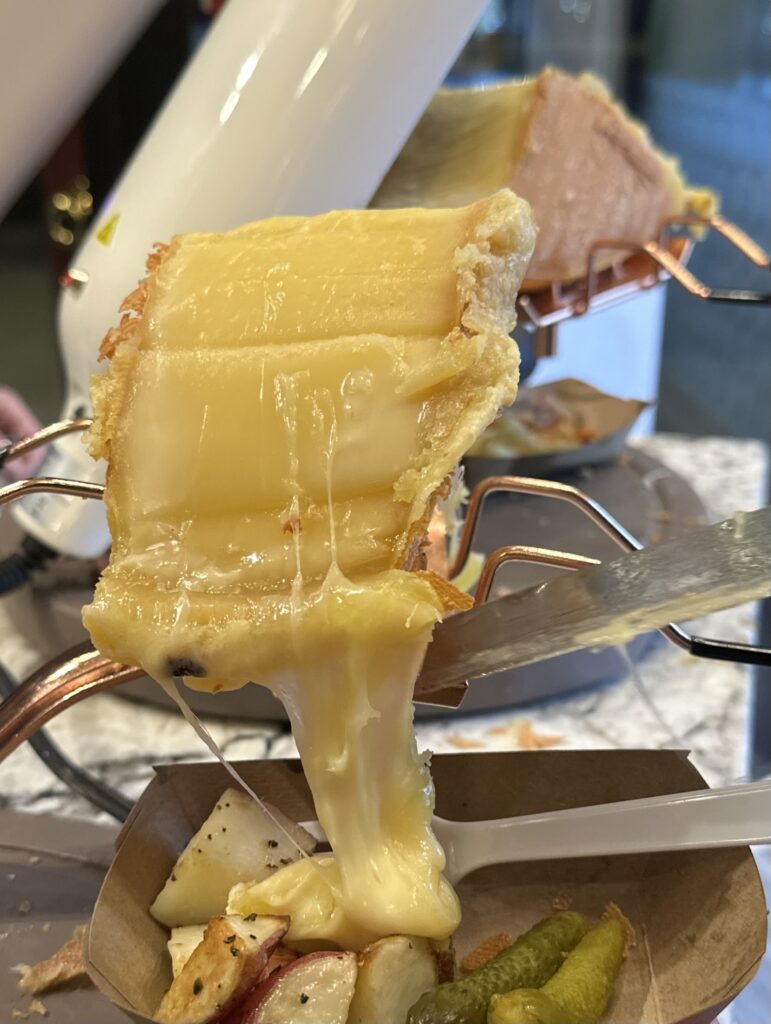
Käsespätzle: Egg Noodles with Cheese
Egg noodles, Emmenthaler cheese, and crispy caramelized onions, oh my! This Southern German/Austrian/Swiss dish is hearty to say the least. If you want to save yourself some time, they do have pre-made noodles at places like Mariano’s with decent international sections. However, if you do want to make the noodles yourself, you need a special tool, with different options depending on your commitment level:
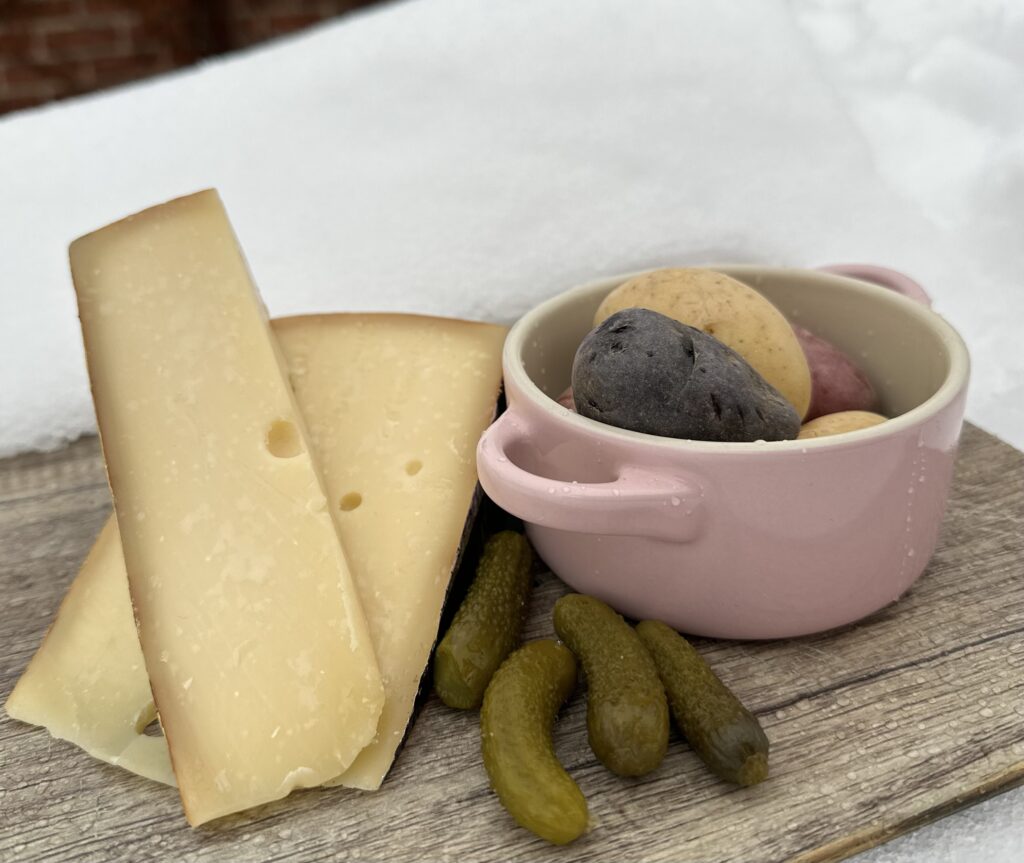
- Spätzle lid – Low cost, easy to use: Scrape the dough through the lid’s holes into boiling water beneath.
- Spätzle maker – High cost, will last forever: Works like a garlic press, major hand strength required.
- Spätzle board – Low cost, practice required: For true authenticity, this is the tool Oma uses.
Serve with a side of sauerkraut for a zing of acidity!
Tartiflette: Cheesy Potatoes on Steroids
Coming from “tartifle,” the French colloquial word for potato, this is another gem of a dish from Savoie, France. It became popular in the 80’s, apparently as a marketing campaign for Reblochon, which as a raw milk cheese aged for less than 60 days, we sadly cannot get in the U.S. Not to worry–tartiflette is essentially a casserole recipe, which makes it very flexible. You can swap with Camembert or Brie, or even cheeses like Taleggio if you like a little funk. As long as you have sliced potatoes, bacon, soft cow cheese, onions, garlic, cream, white wine, and seasoning, you’re good to go!
A Small World paints the picture of an après-ski tartiflette so perfectly: “The real draw comes when eating it outside. The tantalising conflux of melted cheese, creamy potato and butter, the distant scent of a dry white wine mingling wonderfully with bacon and garlic, and the pure decadence of it all as the cold swirls all around creating scented plumes of the most inviting steam.”
Canederli: Dumplings with Cheese
Local to the northwestern region of Italy and closely influenced by the Knödel from neighboring Germany and Austria, these kitchen-sink dumplings are a great way to use up leftover ingredients. Canederli are typically formed with stale bread, onions, speck (a regional cured meat), Alpine cheese like Emmenthaler or whatever local cheese is on hand, and of course, nutmeg amongst other seasonings. The dumplings are boiled and served in a home-made beef broth, and often topped with Grana Padano, an aged cheese similar to Parmigiano Reggiano. Canederli might be considered more rustic than high-end ski lodge, but this sounded too delicious and soul-warming to not share.
French Onion Soup: with Cheese of Course!
Most people have heard of French onion soup, but non-chefs (like me) may not realize this classic is a true labor of love. It sounds simple–the main ingredients are onions, croutons, and cheese. But, you need about five pounds of onions, and after you slice all of them while crying onion tears, they must be slow-cooked and stirred frequently for upwards of forty minutes in order to achieve that perfect caramelization. Once that’s done and you’ve added in the beef broth, butter, herbs, and sherry, the real fun comes. Instead of just topping with croutons, cheese, and serving, you pour the soup into individual heat-safe ramekins, add the croutons and grated cheese (ideally Gruyère or Comté), then broil in the oven for a browned and bubbling finish. I think the results will be well worth the effort.
Soupe de Chalet: Vegetable Soup with Cheese
While this was originally only a summer soup when fresh greens were in abundance in the Swiss mountains and the nights were still cold, modern grocery stores have made Soupe de Chalet a wonderful winter soup as well–especially if you might need a break from fondue and cured meats. It of course includes après-ski staples like potatoes, onions, cream, and Gruyère, as well as macaroni, spinach, fresh herbs, and even nettles, which would have been readily available in the mountains. If nettles aren’t your cup of tea, many people today add carrots, leeks, and kohlrabi instead (all great Gruyère pairings).
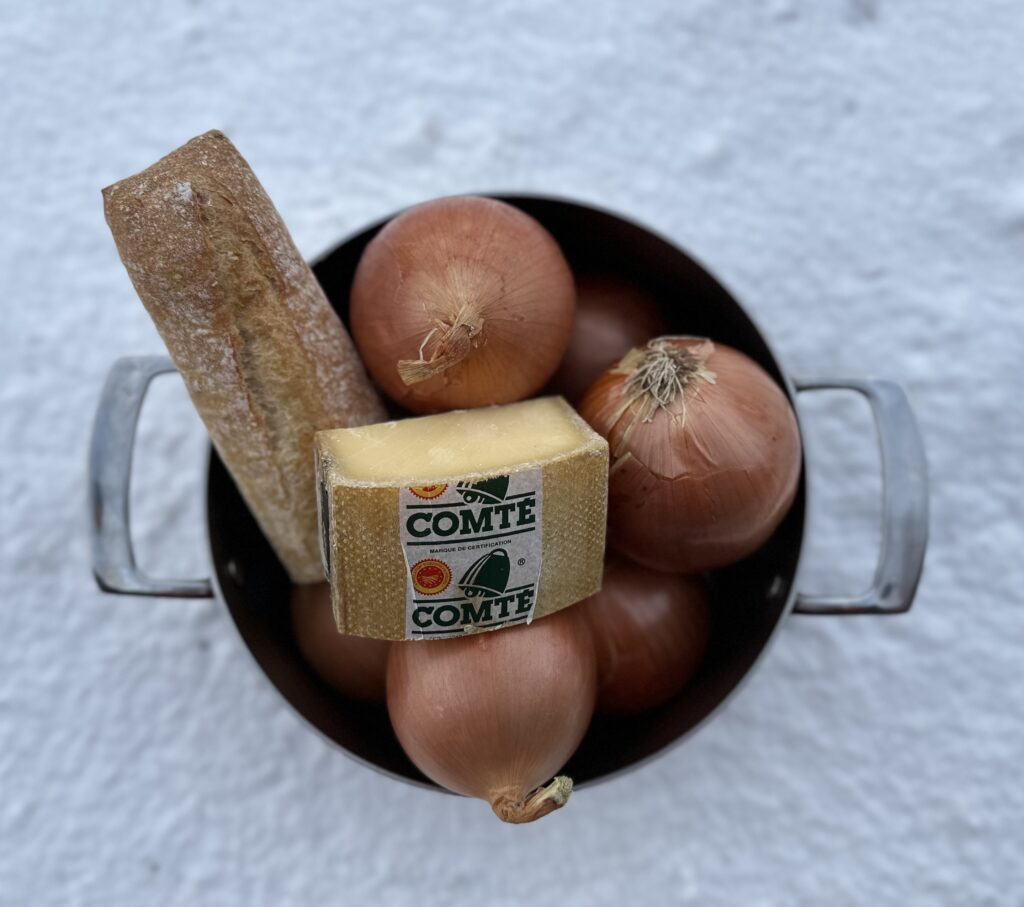
Decadent Après-Ski Drinks to Try
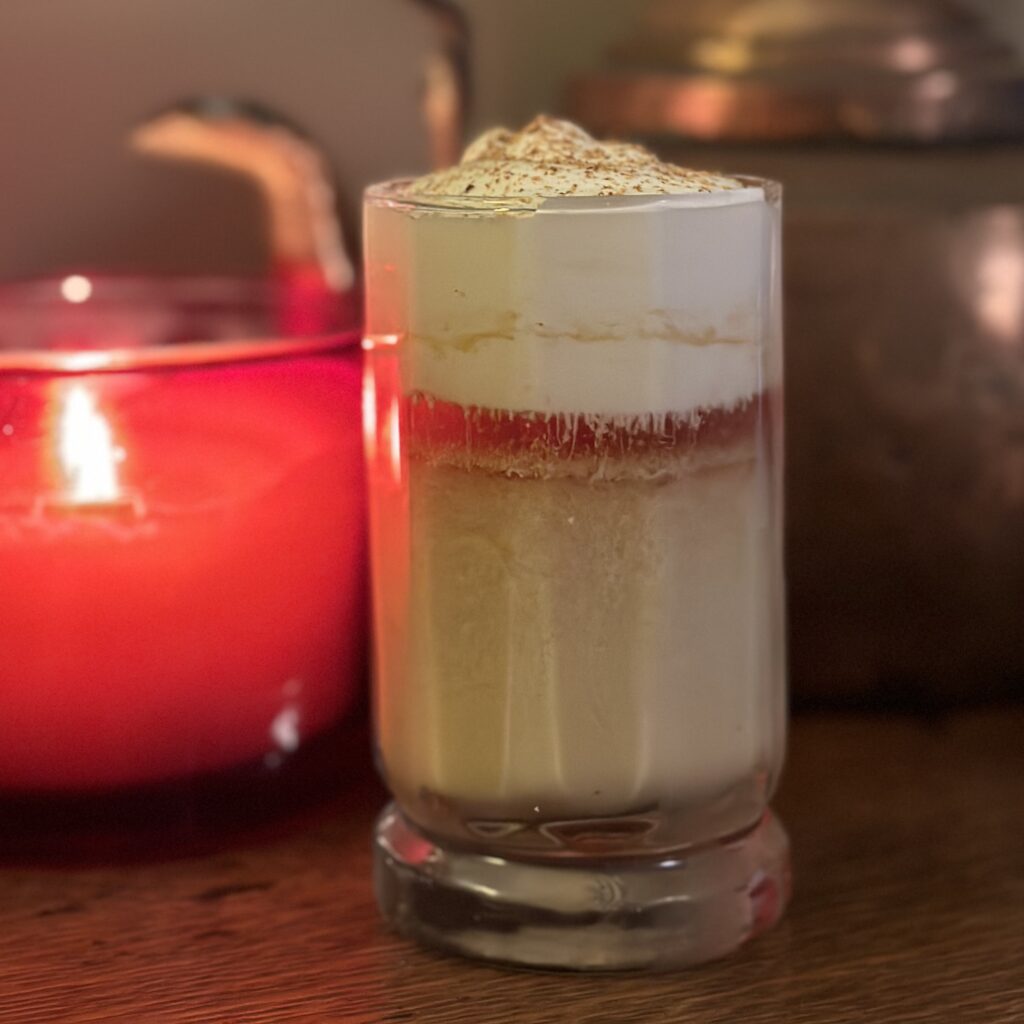
Il Bombardino: Italian Eggnog Cocktail
Love eggnog but can’t find it after the holidays? Give this a try. Invented in 1972 at a ski lodge and deemed “a little bomb” for its compact potency, the bombardino is a staple of Alpine resorts. I got lost trying to find an “official” recipe as there are so many versions, but most bartender recipes I’ve seen include the following: eggnog liqueur (popular brands are Advocaat and Zabov), brandy, whipped cream, and cinnamon. If you can’t find the pre-made liqueur, there are simple from-scratch recipes.
The liqueur and brandy are heated and poured into glasses, then topped with whipped cream and cinnamon. Some recipes are equal parts liqueur and brandy in an espresso glass, some are 2:1 or 3:1 ratios in a larger glass. This cocktail is fun for its many variations–switch the brandy for whiskey and it’s a Scozzese, or swap in espresso to make a Calimero. Nutmeg or grated chocolate can take the place of cinnamon as a garnish, and I even saw lemon zest atop a Swedish bombardino. Intriguing!
Kafi Fertig: Schnapps with Coffee
Every coffee-drinking culture has a spiked version of its wake-up juice! In Switzerland, Kafi Fertig (“finished coffee”) is also known as Kafi Schnaps, or Kafi Luz in Lucerne. France has a communal café Savoyard with brandy and orange slices, while Italy has Caffè corretto with grappa. If you want to take the Swiss route, here is an easy Kafi Fertig recipe to try:
- Place two sugar cubes in the bottom of a heat-safe glass.
- Add a small amount of instant coffee powder (less than a teaspoon).
- Add 1.5 oz of Schapps. Traditional flavors include Kirsch (cherry), Zwetschgen (plum), or Träsh (apple or pear)
- Add boiling water to fill the rest of the glass, stir, and enjoy!
The trick is that it’s more about the booze than the caffeine–the coffee should be weak enough that the cocktail is transparent.
Mulled Wine
This is another beverage that every culture (or at least every cold-climate wine-drinking culture) has a version of–glühwein, bisschopswijn, glögg, gløgg, glintvine, vin chaud, and vino caliente to name just a few. Recipes are passed down through the generations, and even differ from house to house in the same town, so there’s not really a right or wrong way to make hot spiced wine. However, I did find a recipe from Valais, Switzerland for a little Alpine authenticity. Lower and Central Valais speaks French, while Upper Valais speaks German, so I’m not sure if this should be called vin chaud or glühwein, but I’m sure it will be delicious in any language.
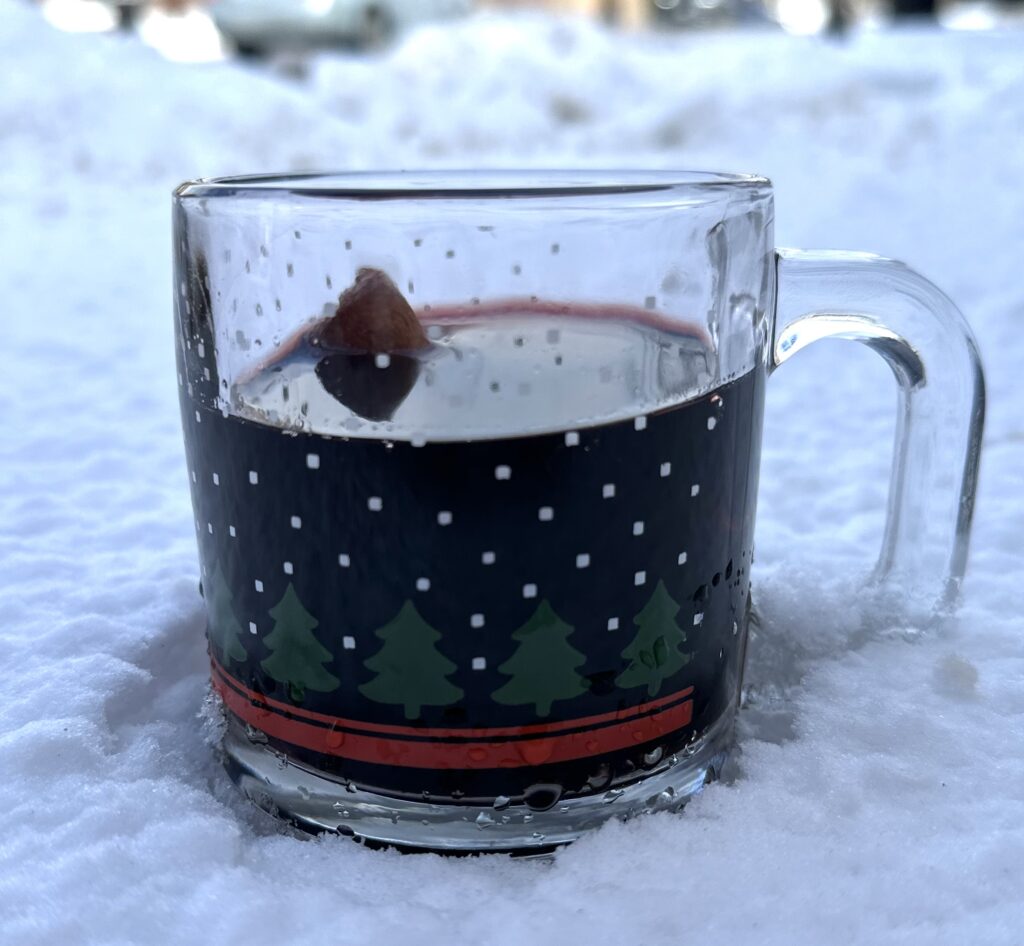
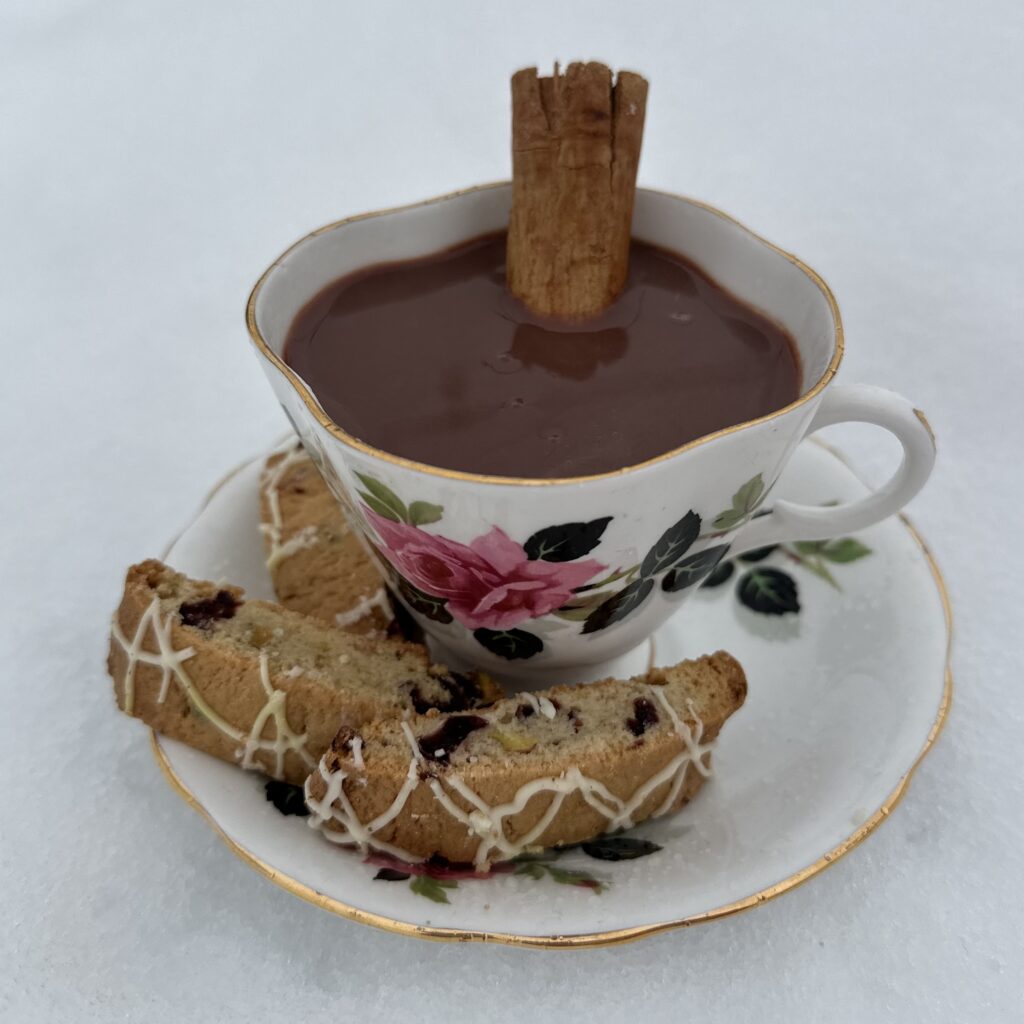
Chocolat: French Sipping Chocolate
French Sipping Chocolate is the ultimate drinkable dessert (or drinkable breakfast depending on who you ask), and it is not to be confused with the hot cocoa powder that we’re used to in the States. It’s made by slowly melting 70% dark chocolate into whole milk that’s been heated up with cinnamon sticks, vanilla, and cocoa powder, with a little salt to finish. It’s a great non-alcoholic option, topped with home-made whipped cream and dipped with traditional French brioche–or pair with biscotti for an Italian spin!
No matter what you like to eat and drink in the colder months, be sure to treat yourself. Get some vitamin D and fresh air however you can, then warm up with your favorite stand-by recipes, or take some tips from another culture and try something new!
We’d love to know what helps you get through the winter! Share your recipes and tag us @marche496 on Facebook or Instagram. Happy eating!
More About Après-Ski Food & Culture
- https://www.wineenthusiast.com/culture/spirits/apres-ski-cocktails-culture/
- https://www.bbc.com/travel/article/20231220-vov-where-the-story-of-italys-eggnog-war-began
- https://www.asmallworld.com/explorer/articles/classic-apres-ski-dishes-alps
- https://blog.musement.com/us/best-apres-ski-french-specialties/
- https://saxelbycheese.com/blogs/cheese-blog/what-is-alpine-swiss-cheese

